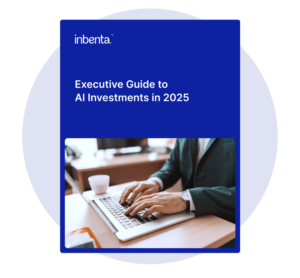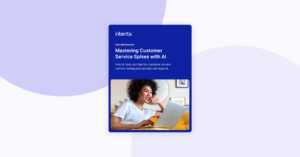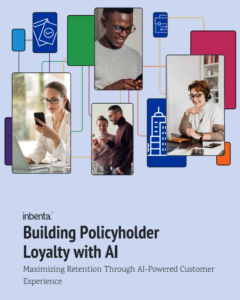From healthcare diagnostics and personalized shopping experiences to autonomous vehicles on our roads, AI is reshaping industries at a breakneck pace. But with this rapid advancement comes a tricky balancing act: How do we continue to innovate with AI while safeguarding privacy and bolstering cybersecurity?
The dual edge of AI innovation
AI innovation is vital. In healthcare, AI can give precise and accurate automated responses, improving customer interactions, and assisting with patient inquiries. Financial services can use AI to make transactions more secure. Even in transportation, AI can optimize logistics and manage booking queries. It’s like having a supercharged engine for progress.
But here’s the flip side. The same AI that accelerates growth can pose significant privacy risks. AI systems thrive on data — lots of it. Often, this data includes sensitive personal information. Imagine an AI model trained on patient records to improve diagnostic accuracy. That’s incredible, but if that data isn’t handled properly, it could lead to unauthorized access or misuse. So, while we’re riding this wave of innovation, we have to be cautious about the undertow.
Transform your customer experience with AI.
Inbenta’s Conversational AI platform is deployed by companies across industries around the globe to intelligently automate customer service, marketing and sales, and internal operations.
Privacy and cybersecurity: The underlying challenges
Data privacy isn’t just a technical issue; it’s a trust issue. If consumers don’t feel their data is safe, they’re less likely to engage with AI-driven services. We’ve seen historical incidents where AI systems, due to inadequate safeguards, led to data breaches. For instance, there were cases where AI chatbots inadvertently exposed user messages because of flaws in their programming. Such events erode public trust and can stall the momentum of AI adoption.
Cybersecurity threats are evolving too. Attackers are now using AI to craft more sophisticated cyberattacks, like deepfake technology or AI-generated phishing emails that are harder to detect. It’s like a game of cat and mouse, where both sides are getting smarter. So, enhancing cybersecurity measures isn’t just a good practice — it’s essential for survival in the digital age.
Perspectives from different stakeholders
Lawmakers are in a tough spot. They need to craft regulations that protect citizens but don’t stifle technological progress. Too many restrictions could slow down innovation, but too few could leave users vulnerable.
Among AI developers, there’s a growing awareness about the importance of building privacy-conscious AI. Adopting practices like privacy-by-design and secure coding isn’t just ethically sound, it also makes good business sense in the long run.
Business leaders are playing the balancing act too. They’re excited about the potential of AI to drive growth and efficiency but are wary of the risks and the costs associated with compliance. Implementing robust security measures and adhering to regulations can be resource-intensive, especially for smaller enterprises. Yet, neglecting these aspects can lead to even costlier consequences down the line.
Towards collaborative solutions
So, how do we move forward? Collaboration seems to be the key. By bringing together lawmakers, developers, business leaders and other stakeholders, we can create frameworks that promote innovation while safeguarding user interests. Think of it as assembling a team where each player has a role in achieving the common goal.
Adaptive regulatory frameworks are also worth considering. Instead of rigid rules that might become obsolete as technology evolves, flexible regulations can adjust to new developments. This approach allows for protection without putting a damper on innovation.
In the end, striking the right balance isn’t easy, but it’s necessary. By fostering open dialogue, embracing collaborative efforts, and remaining adaptable, we can navigate the complex landscape of AI regulation. After all, the goal is to build a future where AI contributes positively to society, enhancing our lives while respecting our rights.
In brief:
- AI is rapidly transforming industries, from healthcare to transportation.
- Innovation with AI can lead to privacy risks due to the extensive data it requires.
- Privacy issues are trust issues; mishandling data can dissolve public trust in AI systems.
- AI-driven cybersecurity threats are becoming more sophisticated, requiring enhanced security measures.
- Lawmakers face the challenge of regulating AI without stifling innovation.
- Developers acknowledge the importance of privacy-conscious AI design and secure coding.
- Business leaders must balance AI-driven growth with the costs of compliance and security.
- Collaborative solutions involving all stakeholders can create regulatory frameworks that balance innovation with user protection.
- Adaptive regulations that evolve with technology may prevent obsolescence without hindering progress.












